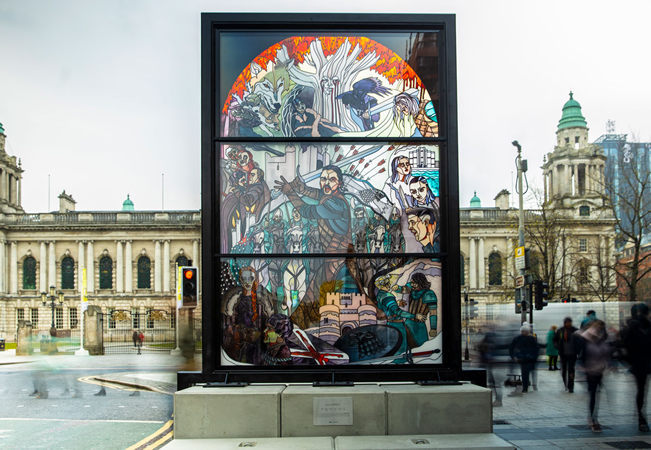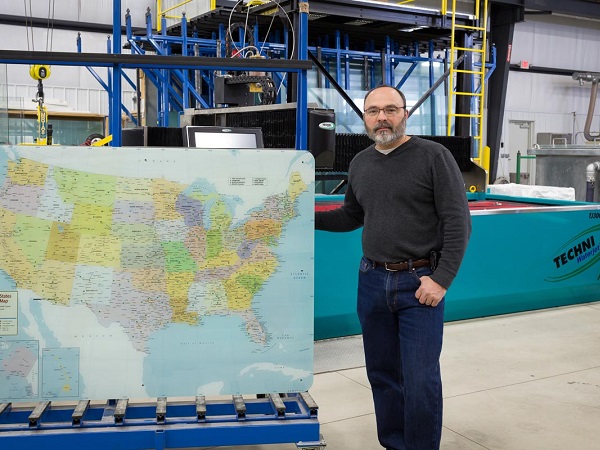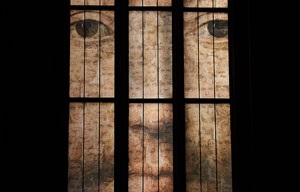Date: 17 February 2003
"We needed more space and we wanted to do classes and do retail," Britton said of the move.
Now in its new home, Pearl Art Glass has room to sell hundreds of colors and types of glass and other supplies for making stained glass.
Classes for those who want to learn the art start April 8, with Beginner Stained Glass, and will be expanded in the months to come to include more advanced courses.
Working with Britton, who has 30 years of experience, is glass artist Troy Moody, who learned how to create stained glass as an apprentice and craftsman in Arizona before coming to the Seacoast.
Through Pearl Art Glass, both create stained glass pieces for customers homes and businesses, as well as churches around the region. Theyll also repair existing stained-glass windows, which can be more complicated than creating an entirely new window, because of the delicate work.
Britton and Moody both make and repair stained glass in much the same way it has been done for hundreds of years, but combine some modern-day advances.
"This is a true, traditional studio, as opposed to a more hobbyist shop," Moody said.
What that means is not that the shop wont be open to hobbyists - both Britton and Moody encourage people interested in the technique to come see it and learn it themselves - but that they use the same process to join the glass and stain some pieces that were used centuries ago.
The critical difference, Moody and Britton said, between the traditional means of making stained glass and the popular method that has arisen in more recent years, is the use of lead vs. copper foil.
Lead is Pearl Art Glass preferred material to join stained glass, particularly when it comes to windows, because it contracts and expands with cold and warm weather better than copper foil, making the window far less likely to gap or fall apart, according to Britton.
Copper foil gained popularity with glass artists such as Tiffany, Britton said, who used that technique because the metal was more flexible than lead. Lead does carry its own challenges, she said, including requiring glass artists to wear gloves and other protection when soldering the metal to avoid lead poisoning.
"Its so much easier to copper foil than lead; it became popular," Britton said. However, she added, copper foil can be less durable than lead. "Were doing it the old way for the integrity of the window. ... As far as design purposes, the look of it is stronger."
That said, Pearl Art Glass will offer students in its classes the opportunity to choose which technique they want to learn and will gear various courses toward using both lead and copper foil.
"Both of them have limitations and benefits," Britton said.
In addition to metal, Pearl Art Glass will teach a technique that uses a thick epoxy to hold colored glass nearly an inch thick in place. That technique, called Dalles de Verre, involves gently hammering 10-pound pieces of glass to achieve the desired shape, arranging them and pouring the epoxy in last. The result is a piece that lets light show through all of the glass as it sits in a free-form frame of the sand-colored cement.
"Its so thick; the color is so deep and rich, and really saturated," Britton said.
Traditional stained glass uses glass that is about one-eighth of an inch thick, and that glass could come from anywhere in the world.
While the glass used for Dalles de Verre comes mostly from West Virginia, Pearl Art Glass also finds materials from other sources, such as hand-blown sheets of glass with swirling shades of color made in Germany.
Most often, Moody and Britton said, they create stained-glass windows for a specific opening, whether a window in a home or business, or side panels of doorways. Plans are also in the works to make shower doors from a stained-glass technique that will allow it to be colored to match tiles. Stained-glass pieces are also made as hangings, less permanent than a window.
The process of making the pieces is highly customized and involves meeting with clients, developing a few designs based on their needs and ideas, and then clients selecting the final version, Moody explained. Designs can be as customized as to include a specific image, like a pets face.
From there, the design is drawn out to scale and used as a map to cut the various colors of glass, lay them out and join them with metal.
The cost of the windows ranges from about $130 to $1,500 per square foot and varies based on the type of glass used, whether theres hand-etching added, and whether the glass is simply clear or colored, or if it is stained by the artist. Those variations also affect how long it takes to complete the project, according to Britton.
A recent church window, she said, "took me probably twice as long to paint the window as it did for Troy to lead it."




Add new comment